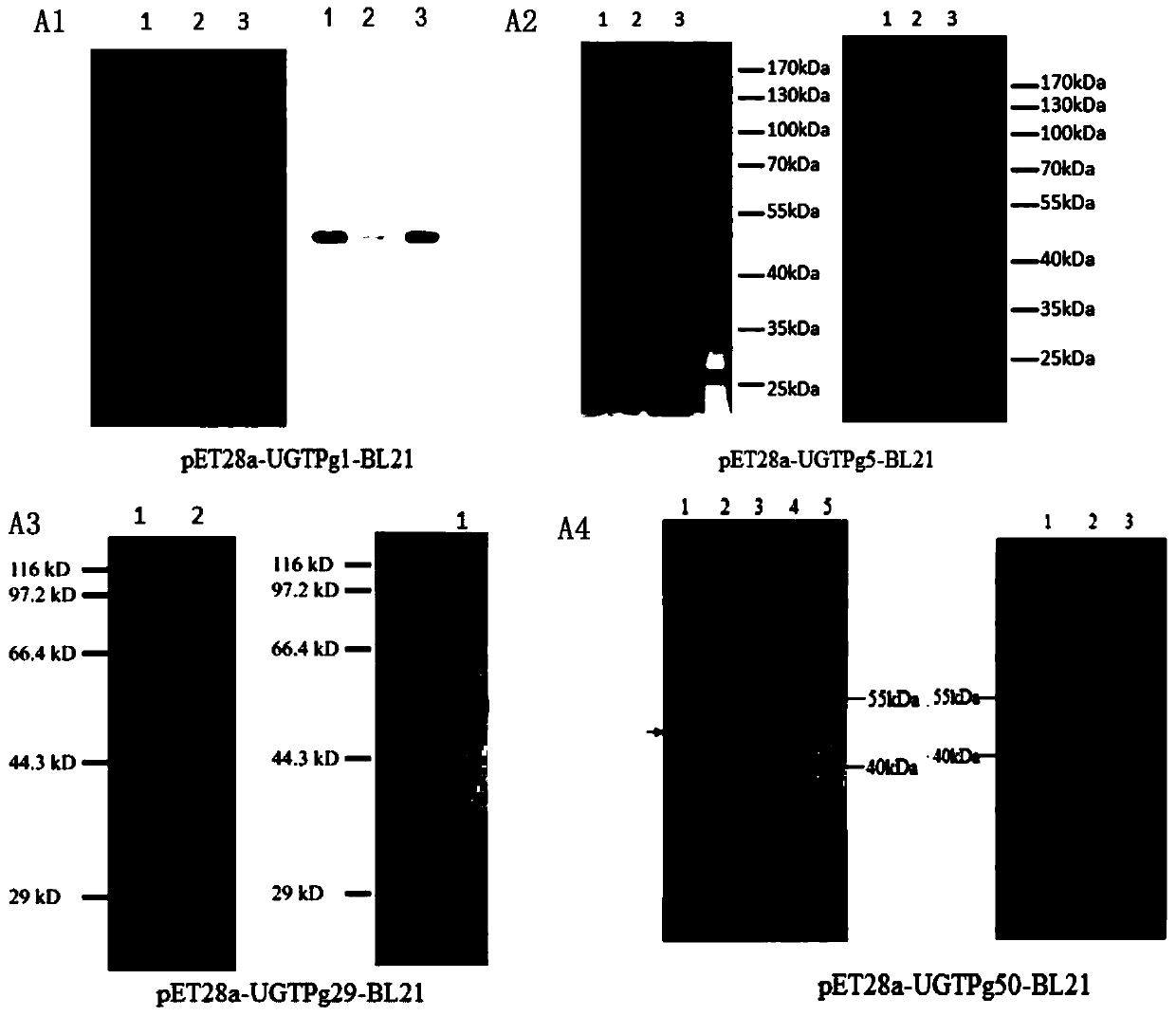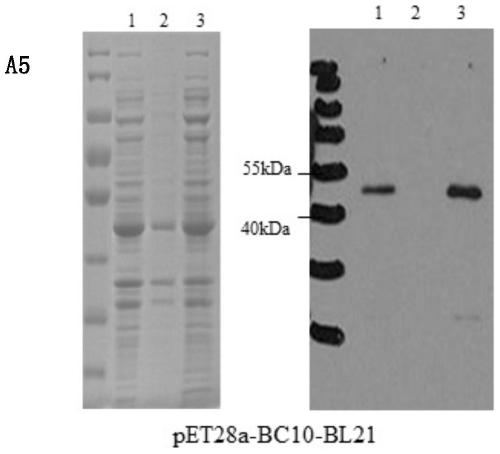A new catalytic system for preparing rare ginsenosides and its application
A ginsenoside, a rare technology, applied in the fields of biotechnology and plant biology, can solve the problems of severe reaction conditions, limitation, and low specificity of chemical hydrolysis method.
- Summary
- Abstract
- Description
- Claims
- Application Information
AI Technical Summary
Problems solved by technology
Method used
Image
Examples
Embodiment 1
[0149] Example 1. Cloning of glycosyltransferases UGTPg1, UGTPg5, UGTPg29, UGTPg50, BC10 and sucrose synthase SUS1
[0150] (1) Cloning of glycosyltransferases UGTPg1, UGTPg5, UGTPg29, UGTPg50 and BC10
[0151]Two primers respectively having the nucleotide sequences of SEQ ID NO:7 and SEQ ID NO:8 in the sequence listing were synthesized. Using the cDNA obtained by reverse transcription of RNA extracted from ginseng as a template, PCR was performed using primers SEQ ID NO:7 and SEQ ID NO:8. The DNA polymerase was selected from the high-fidelity KOD DNA polymerase of Treasure Bioengineering Co., Ltd. The PCR amplification program is: 94°C for 2min; 94°C for 15s, 58°C for 30s, 68°C for 2min, a total of 35 cycles; 68°C for 10min, then drop to 10°C. The PCR products were detected by agarose gel electrophoresis, and the results were as follows: figure 1 a. Under UV irradiation, the target DNA band is excised. Then Axygen GelExtraction Kit (AXYGEN Company) was used to recover DN...
Embodiment 2
[0166] Example 2. Glycosyltransferase and sucrose synthase SUS1 expression
[0167] (1) Expression of UGTPg1, UGTPg5, UGTPg29, UGTPg50 and BC10 in Escherichia coli
[0168] Two primers respectively having the nucleotide sequences of SEQ ID NO:19 and SEQ ID NO:20 in the sequence listing were synthesized. Two restriction sites, BamH I and Xho I, were respectively set at both ends of the synthesized primers SEQ ID NO:19 and SEQ ID NO:20, and PCR was performed using pMDT-UGTPg1 as a template. The PCR amplification procedure is the same as in Example 2. The PCR product was separated and recovered by agarose gel electrophoresis, and then digested with BamH I and Xho I, and then ligated into the pET28a vector (Novagen) that was also digested with BamH I and Xho I using T4 DNA ligase from NEB Company. The obtained recombinant plasmid was named pET28a-UGTPg1. The recombinant plasmid pET28a-UGTPg1 was transformed into Escherichia coli BL21(DE3) (Novagen Company) to construct the reco...
Embodiment 3
[0178] Example 3. Synthesis of rare ginsenosides from ginsenogenin catalyzed by sucrose synthase and glycosyltransferase
[0179] The reaction of glycosyltransferase catalyzing the synthesis of ginsenoside from ginsenogenin needs to add UDP-glucose as the glycosyl donor, and the current commercial UDP-glucose price is about 4000 RMB per gram (Sigma Company). In the reaction system, UDP-glucose needs to be added in excess (about 10 mM UDP-glucose needs to be added to the reaction system for converting 1 mM ginsenogenin) to ensure that the reaction proceeds. Moreover, UDP-glucose is in a state of continuous consumption during the reaction process and cannot be recycled. These comprehensive factors make it extremely expensive to directly use UDP-glucose as a glycosyl donor for glycosylation to prepare glycosides. In the present invention, by using plant-derived sucrose synthase, by adding UDP and sucrose to the reaction system, sucrose synthase catalyzes UDP and sucrose to synthe...
PUM
| Property | Measurement | Unit |
|---|---|---|
| molecular weight | aaaaa | aaaaa |
| molecular weight | aaaaa | aaaaa |
| molecular weight | aaaaa | aaaaa |
Abstract
Description
Claims
Application Information
 Login to View More
Login to View More - R&D
- Intellectual Property
- Life Sciences
- Materials
- Tech Scout
- Unparalleled Data Quality
- Higher Quality Content
- 60% Fewer Hallucinations
Browse by: Latest US Patents, China's latest patents, Technical Efficacy Thesaurus, Application Domain, Technology Topic, Popular Technical Reports.
© 2025 PatSnap. All rights reserved.Legal|Privacy policy|Modern Slavery Act Transparency Statement|Sitemap|About US| Contact US: help@patsnap.com



